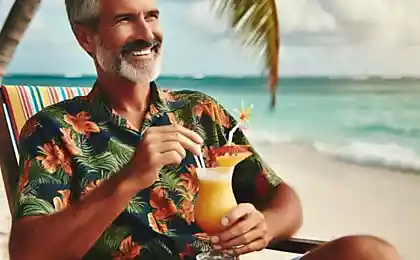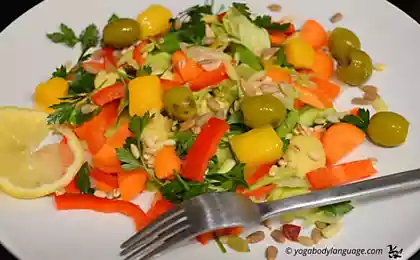211
Inventions that do not need improvement
Constant improvement and improvement of tools and household items makes our life easier and more convenient. For example, if someone tries to write with the original 1868 pen from Sholes and Glidden today, they will cover their hands with countless calluses. And if you had to open a medieval castle, you would spend a long time tinkering with it before you learned how to make a sharp blow with the key, which was simply necessary to open it.
However, paradoxically, there are now a number of things that, despite the fact that more than a century has passed since their invention, are still preserved in their original form without improvement.
In the XIX century in the prairies of Oklahoma it was quite difficult to make a fence to fence the place of grazing cattle. There is not enough wood to build fences. What do we do? Four local guys in the late 1870s came up with the design of the fence, consisting of rare support poles and stretched between them barbed wire. The barbed wire was patented and has since been produced unchanged.
In the late 1950s, designers Alfred Fielding and Mark Chavannes came up with a brilliant idea perfect for the aesthetic design of space-age spaces: cellophaneous volumetric tactile wallpaper! Unfortunately, plastic curtains with air bubbles never became fashionable. Then the innovators decided to simply change the purpose of the invention. In 1964, they patented their own "method of manufacturing laminated gasket material." Thus, bubble wrap has become an ideal way to preserve fragile and especially valuable things during transportation. Such packaging has been widely used due to its practicality and cheapness.
The rocking chair is not as old as you think. These chairs began to appear in the early 18th century in the United States and are still popular with people suffering from back or musculoskeletal diseases. It's not just a soothing swing. Rocking chairs automatically adjust their center of balance, so that the one who sits in them, each time occupies a comfortable position.
The thin-wire designs that flooded patent offices in the late 19th century came in all sorts of shapes—wings, triangles, pretzels, and so on—but their purpose was the same: holding a certain number of sheets of paper. They've all been patented, except for the form we've been used to for 100 years. The standard oblong design of the Pearl, which has a controversial origin, nevertheless defeated all the others, throwing them into the box of history.
Archaeologists believe that teapots were invented during the reign of the Chinese Yuan dynasty, which began in 1279. The first kettles were made of clay and were probably modified over the years. It is believed that initially kettles were designed for one portion, thus deciphering the purpose of the nose, directly from which the drinker sipped tea. Today you can buy a teapot made of porcelain, glass, paper or titanium. But its simple and perfect design, consisting of a handle, a lid and a nose, has remained unchanged for hundreds of years.
A hand and a small tight net at the end. This primitive but effective device is found in almost every home, and it is indispensable in the summer months to fight flying flies, mosquitoes and wasps. The Killer on the Fly was patented in 1900 by Robert Montgomery. This man was a public health worker in Kansas and popularized his invention to kill flies to stop the spread of disease. Oddly enough, but such a primitive fly swatter was a very effective tool against evasive insects.
God forbid you have mice in your house. Getting rid of them will be a real problem. And if the tenants of the house do not have a cat that does not mind hunting mice, then mousetraps are the best way. There was a time when mice were terrible parasites: these sneaky animals were a real threat to children and food, as well as carriers of various diseases, up to the plague. Fortunately, in 1894, William Hooker invented the spring mousetrap. And in 1903, John Mast made a design improvement, making it safer to load bait. His mousetrap design is still in use today.
source: fresher.ru
Source: /users/1080
However, paradoxically, there are now a number of things that, despite the fact that more than a century has passed since their invention, are still preserved in their original form without improvement.
In the XIX century in the prairies of Oklahoma it was quite difficult to make a fence to fence the place of grazing cattle. There is not enough wood to build fences. What do we do? Four local guys in the late 1870s came up with the design of the fence, consisting of rare support poles and stretched between them barbed wire. The barbed wire was patented and has since been produced unchanged.
In the late 1950s, designers Alfred Fielding and Mark Chavannes came up with a brilliant idea perfect for the aesthetic design of space-age spaces: cellophaneous volumetric tactile wallpaper! Unfortunately, plastic curtains with air bubbles never became fashionable. Then the innovators decided to simply change the purpose of the invention. In 1964, they patented their own "method of manufacturing laminated gasket material." Thus, bubble wrap has become an ideal way to preserve fragile and especially valuable things during transportation. Such packaging has been widely used due to its practicality and cheapness.
The rocking chair is not as old as you think. These chairs began to appear in the early 18th century in the United States and are still popular with people suffering from back or musculoskeletal diseases. It's not just a soothing swing. Rocking chairs automatically adjust their center of balance, so that the one who sits in them, each time occupies a comfortable position.
The thin-wire designs that flooded patent offices in the late 19th century came in all sorts of shapes—wings, triangles, pretzels, and so on—but their purpose was the same: holding a certain number of sheets of paper. They've all been patented, except for the form we've been used to for 100 years. The standard oblong design of the Pearl, which has a controversial origin, nevertheless defeated all the others, throwing them into the box of history.
Archaeologists believe that teapots were invented during the reign of the Chinese Yuan dynasty, which began in 1279. The first kettles were made of clay and were probably modified over the years. It is believed that initially kettles were designed for one portion, thus deciphering the purpose of the nose, directly from which the drinker sipped tea. Today you can buy a teapot made of porcelain, glass, paper or titanium. But its simple and perfect design, consisting of a handle, a lid and a nose, has remained unchanged for hundreds of years.
A hand and a small tight net at the end. This primitive but effective device is found in almost every home, and it is indispensable in the summer months to fight flying flies, mosquitoes and wasps. The Killer on the Fly was patented in 1900 by Robert Montgomery. This man was a public health worker in Kansas and popularized his invention to kill flies to stop the spread of disease. Oddly enough, but such a primitive fly swatter was a very effective tool against evasive insects.
God forbid you have mice in your house. Getting rid of them will be a real problem. And if the tenants of the house do not have a cat that does not mind hunting mice, then mousetraps are the best way. There was a time when mice were terrible parasites: these sneaky animals were a real threat to children and food, as well as carriers of various diseases, up to the plague. Fortunately, in 1894, William Hooker invented the spring mousetrap. And in 1903, John Mast made a design improvement, making it safer to load bait. His mousetrap design is still in use today.
source: fresher.ru
Source: /users/1080























